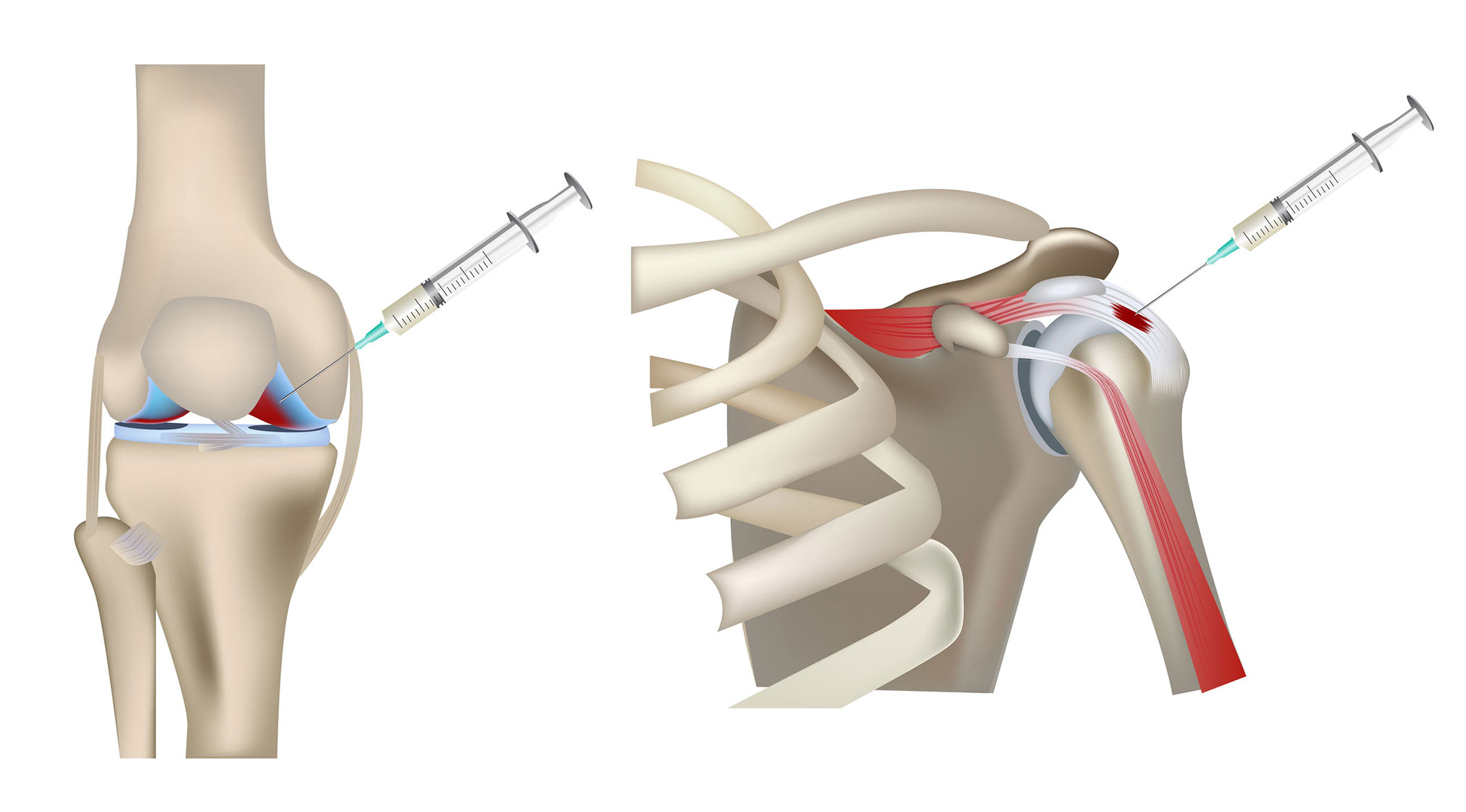Treatment
Orthobiologics (Regenerative Medicine) FAQ
Orthobiologics are therapies developed from biologic (natural) substances that can be used by orthopaedic specialists to:
- Help relieve pain and other symptoms of certain orthopaedic conditions, such as early osteoarthritis, which may help delay the need for surgery
- Enhance the body's ability to heal from a repetitive use injury, such as a ligament or tendon strain, cartilage injuries, or broken bone (fracture)
- In some cases, improve healing after orthopaedic surgery
This type of treatment is also commonly known as orthopaedic regenerative medicine.
This article answers some frequently asked questions about orthobiologics to help inform your treatment decisions.
Q: What are the different types of orthobiologics?
A: Biologics are isolated (taken from) from a variety of natural sources — human, animal, or micro-organism. Biologics can be:
- Composed of sugars, proteins, or nucleic acids, or complex combinations of these substances
- Living entities, such as cells and tissues
Some examples of biologics used in orthopaedics include:
- Stem cell treatments (as part of an FDA-approved trial)
- Blood products, such as platelet-rich plasma (PRP)
- Viscosupplementation products used to treat arthritis
Q: How are biologics currently being used in orthopaedic care — for which conditions and injuries?
A: Because orthobiologics are still relatively new, the evidence supporting their use is limited. That said, biologic therapies have shown promise when used:
- To treat tendinopathies, such as tennis elbow (lateral epicondylitis)
- To treat pain from early arthritis, including early knee osteoarthritis, which can help delay the need for surgery
- As an aid to healing after surgery to repair certain tendons, including rotator cuff repair
- To treat avascular necrosis (death of bone tissue resulting from temporary or permanent loss of blood supply to the bone)
Q: How are biologics thought to work and improve symptoms?
A: The way biologics work varies with each product. In theory, biologics interact with your body's own cells and tissues to stimulate healing responses to a variety of orthopedic conditions, including in areas that tend to heal poorly on their own.
For example, platelet rich plasma (PRP) has been widely used for lateral epicondylitis, or tennis elbow, delivering multiple healing factors (contained in the platelets) to the irritated tendons in the elbow to promote healing and decrease pain.
Q: What does scientific evidence say about the effectiveness of orthobiologic therapies?
A: Orthopaedic surgeons have tested the use of orthobiologics for many orthopedic problems. Preliminary results are encouraging, but rigorous testing on the effectiveness of biologics in most orthopedic conditions is lacking. This makes evaluating the effectiveness of orthobiologics challenging.
Q: Who could potentially benefit from orthobiologic treatments?
A: There is potential for benefit from orthobiologics in many areas of orthopedics to treat numerous common conditions.
Q: Are orthobiologics safe? What are the potential risks?
A: Generally speaking, biologic materials harvested (taken) from your own body and used to treat you the same day have been felt to be safe enough to permit their use without extensive FDA approvals. There can still be risks, however, and you should discuss these risks with your doctor.
According to the Food and Drug Administration (FDA), “… Unproven stem cell therapies can be particularly unsafe.” (See full article here). Because stems cells do not come from your own body, and are further manipulated in a laboratory, these treatments pose additional risks and can be offered only in an FDA-approved clinical trial. Ask your doctor if the stem cell treatment they offer is part of an FDA-approved trial.
Q: With so many places offering biologic therapies, how do I know which doctors I can trust?
A: While trustworthy doctors can be found in many areas, if your doctor is board certified and a fellow of the American Academy of Orthopedic Surgeons (FAAOS), it means they have met the rigorous professional and ethical standards established by AAOS — the trusted leader in musculoskeletal health.
Doctors with FAAOS designation have an ongoing commitment to learning the most current information about biologics. The AAOS position statement, Use of Emerging Biologic Therapies, outlines the standard regarding the use of biologics that these doctors follow in their practices.
Q: Do orthobiologic therapies involve fetal stem cells?
A: Stem cell treatments, with rare exceptions, require FDA use in an approved clinical trial only. There are several studies investigating fetal stem cells in orthopedic areas. These are listed on the website clinicaltrials.gov.
Q: Does insurance, including Medicare, cover orthobiologic treatments?
A: Many orthobiologic treatments, even those approved by the FDA, may not be covered by your insurance. Be sure to ask your insurance provider about whether a specific biologic treatment is covered for your specific condition before starting the treatment.
Q: How much do orthobiologic therapies typically cost?
A: Costs vary for each type of biologic and for each doctor or facility. These costs need to be reviewed with your doctor.
Be a savvy consumer; carefully weigh the cost of the treatment against the available information on its effectiveness, as well as the risks and benefits, before starting.
Contributed and/or Updated by
Peer-Reviewed by
AAOS does not endorse any treatments, procedures, products, or physicians referenced herein. This information is provided as an educational service and is not intended to serve as medical advice. Anyone seeking specific orthopaedic advice or assistance should consult his or her orthopaedic surgeon, or locate one in your area through the AAOS Find an Orthopaedist program on this website.







